Crampons might appear to be the sort of equipment that's reserved for those at the intrepid end of the hiking scale. But they are useful for any hiker or climber who's venturing above the snowline.
When snow and ice turn the mountains into beautiful white winter shapes, they also rob the ground of much of its friction. Hiking boots that previously gripped the earth and rock quite comfortably can suddenly find themselves slipping dangerously on the frozen terrain.
What are the best campons for 2025?
Best in Test: Grivel G10 Crampons
Best Value: Elderid Spiderpick Crampons
Best technical crampons: Black Diamond Sabretooth Pro Crampons
Check out our buying advice section below the main reviews to find out what you need to know and what to look for when buying crampons.
How we tested the best crampons
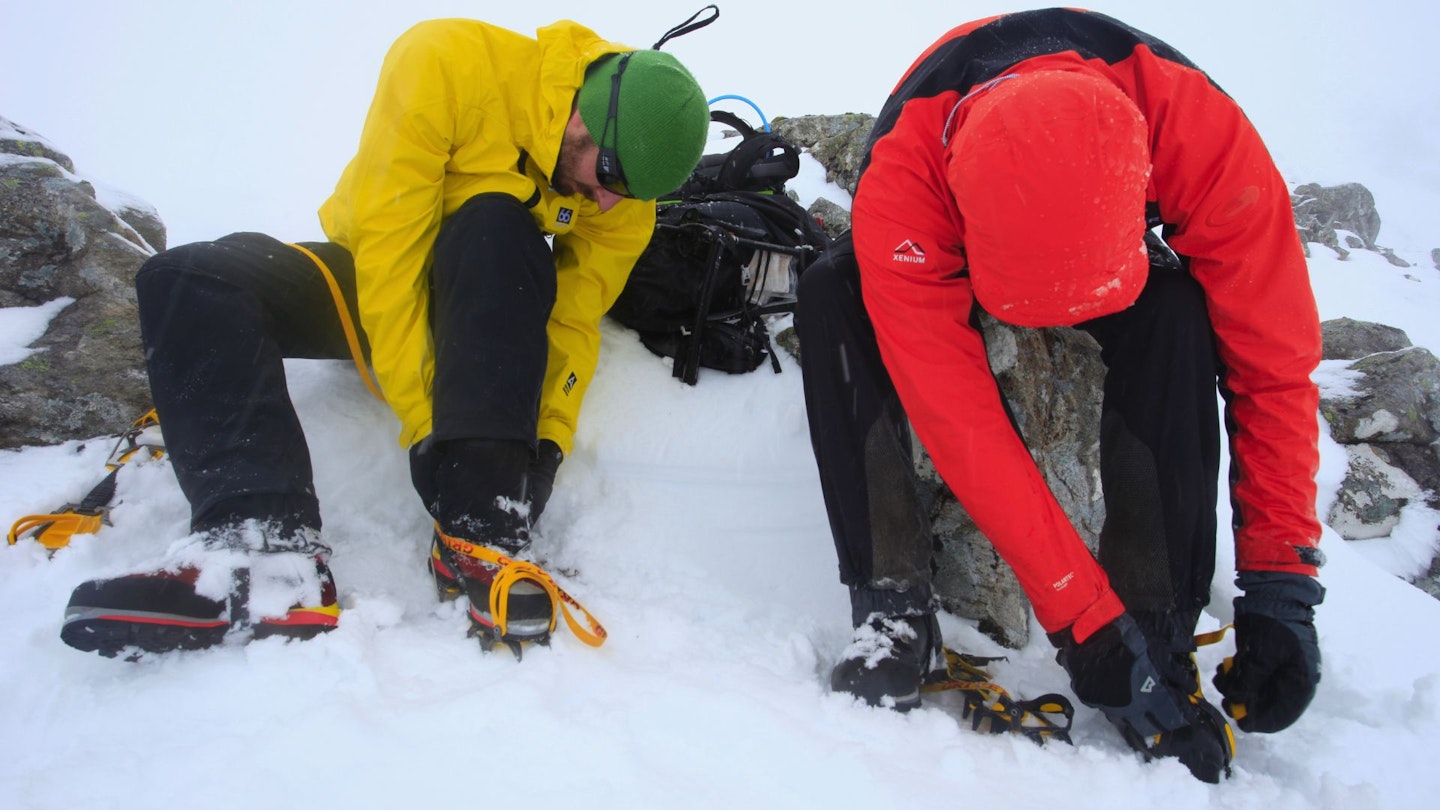
The crampons and microspikes recommended here were tested by our Gear Editor, Ben Weeks. Ben has been with LFTO and Trail magazine for more than 10 years and is a qualified Mountain Leader and Climbing Instructor. We test crampons in the UK's most challenging winter terrain, primarily the Scottish Cairngorms and English Lake District.
What we look for in crampons is whether the promises by the manufacturer are true in the real world. We find out how well each model performs in its intended environment, in addition to crucial aspects such as how well they fit, how easy they are to use, and how robust they are.
Read more on how we test here.
The best crampons reviewed:
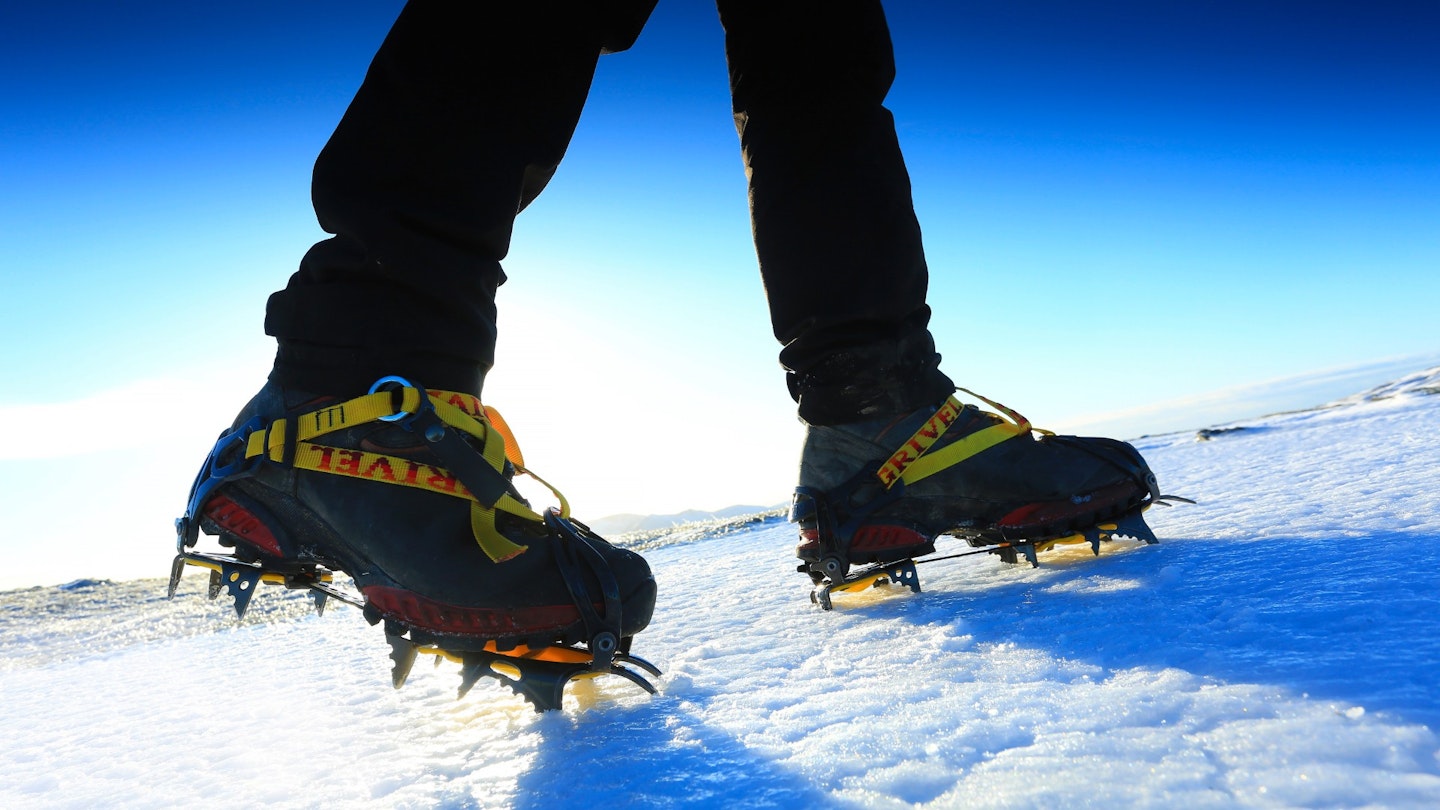
Best in Test
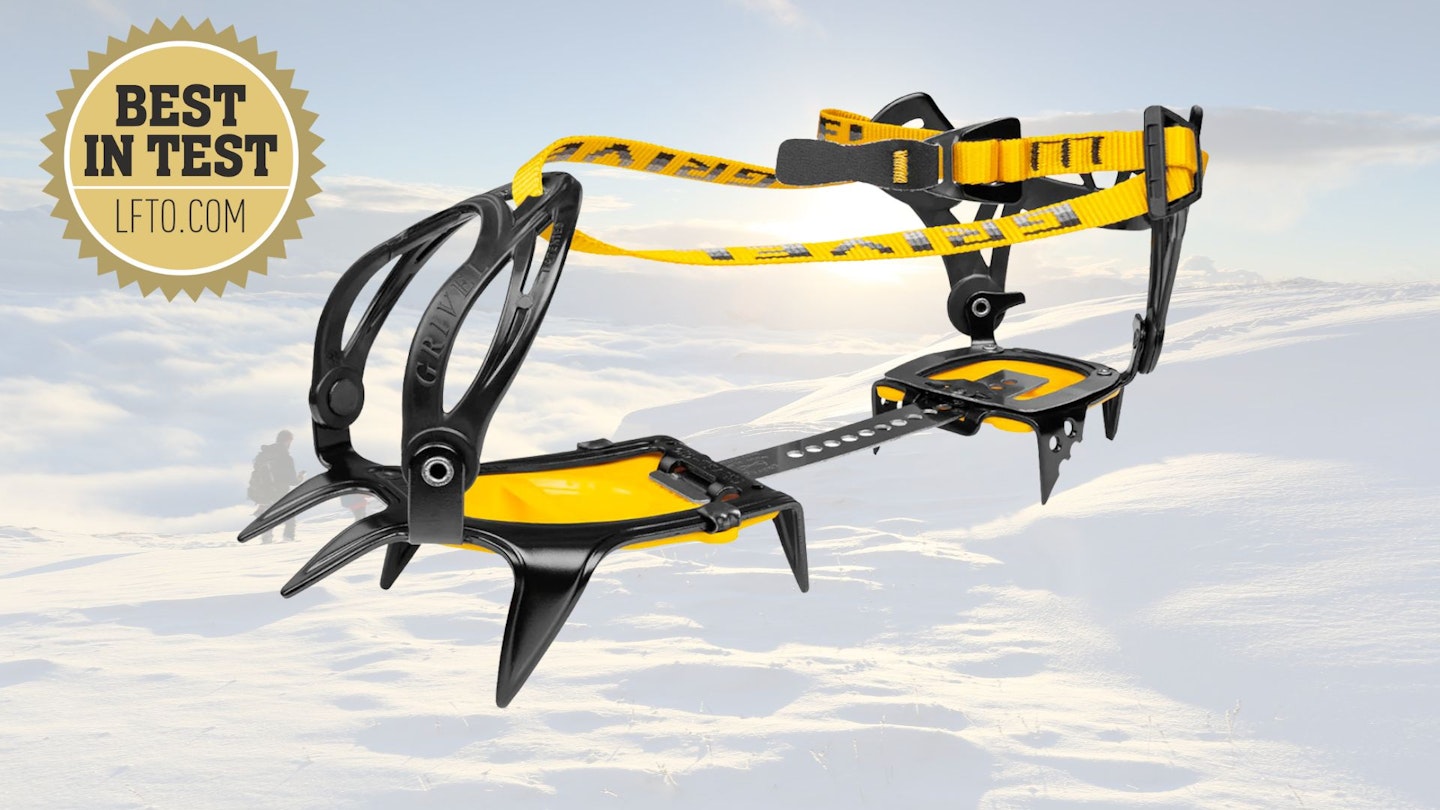
If you want to get stuck in to winter walking in the mountains without actually getting stuck in the mountains, you need a proper pair of crampons.
The Grivel G10 is a classic 10-pointed (six under the front part, four under the rear) walker’s crampon. It's available in two fittings and is a great go-to.
The traditional full-strap New-Classic EVO model can be attached to any hiking boot that’s stiff enough for use with a crampon while the New-Matic EVO replaces the rear strap with a heel-clip for increased security and ease of fitting on boots with a rear crampon welt.
Pros
- Reliable grip without being overkill
- Two binding systems increases its compatibility with B2 boots
- Sheds snow effectively
Cons
- You don't need the G10 for lower level hillwalking
| Best for | Winter walking in the mountains |
| Weight (pair) | 806g (New-Classic EVO), 852g (New-Matic EVO) |
| Sizes | EU 35 - 46 |
| Number of spikes | 10 |
| C rating | C1 |
Best Value
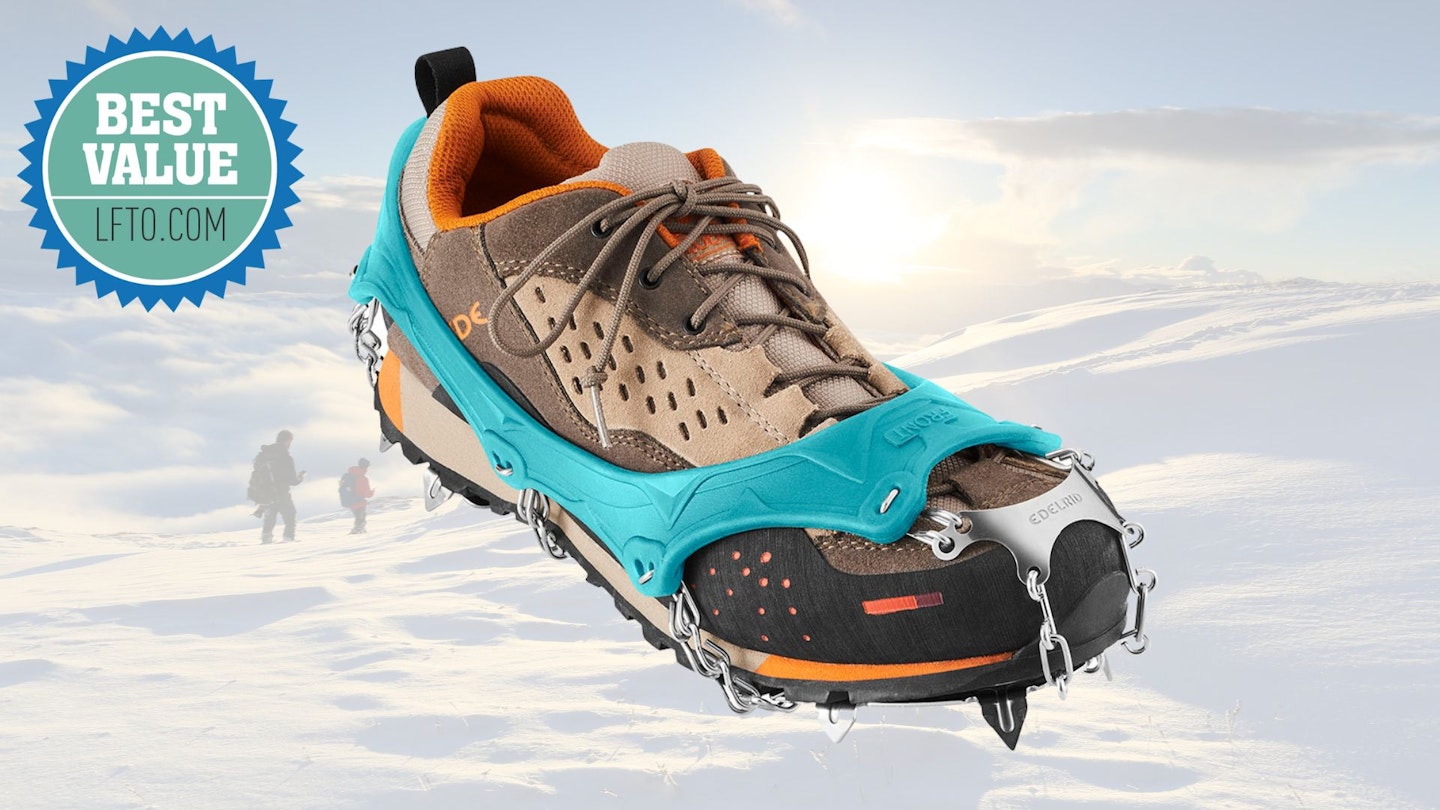
Think of the Spiderpicks as snow chains for your feet. Much like snow chains, these can be kept in reserve and utilised when conditions underfoot require a boost of grip.
Choose from one of their three sizes (S, M, L) and colours (green, black, blue) and you can pull these on over most types of footwear. But with their beefy undersole chains and more aggressive spikes, they’re perhaps best used with chunky hiking footwear.
Though not suitable for steeper hillsides, the Spiderpicks open up winter trails that might otherwise be out of bounds.
Pros
- Excellent on slippery, flatter terrain
- Good value
- Easy to fit
- Compatible with all hiking footwear
Cons
- Not suitable for steep hillsides
| Best for | On-path hillwalking |
| Weight (pair) | 415g |
| Sizes | S, M, L |
| Number of spikes | 8 |
| C rating | N/A |
Best for non-technical winter routes
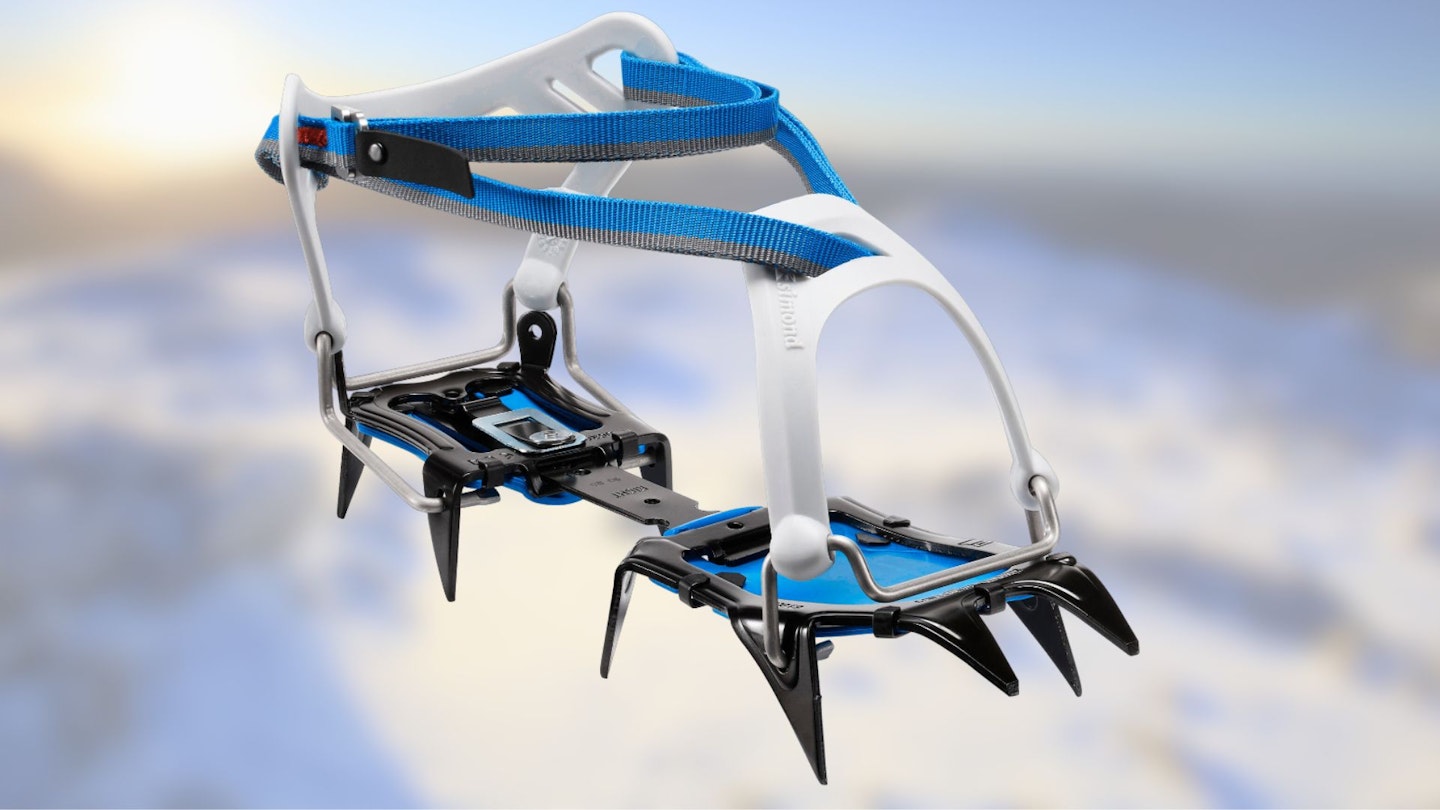
www.decathlon.co.uk
Founded in 1860 in Chamonix at the base of Mont Blanc (where its crampons are still made), Simond has been part of the Decathlon family since 2008. Like much Decathlon gear, the Caiman offers reliable performance at an excellent price.
The 10-point arrangement offers the best layout for walking, while the strap-on attachment means they’ll fit almost any winter hiking boots.
At 850g per pair they’re lightweight too. More technical models do exist, but these are ideal for walkers who occasionally venture into the hills in winter.
Pros
- Good value
- Strap-on binding fits most winter boots
- Not too heavy
Cons
- Not suitable for steep hillsides
| Best for | Non technical winter walking in the mountains |
| Weight (pair) | 850g |
| Sizes | EU 36 - 46 |
| Number of spikes | 10 |
| C rating | C1 |
Best technical crampons
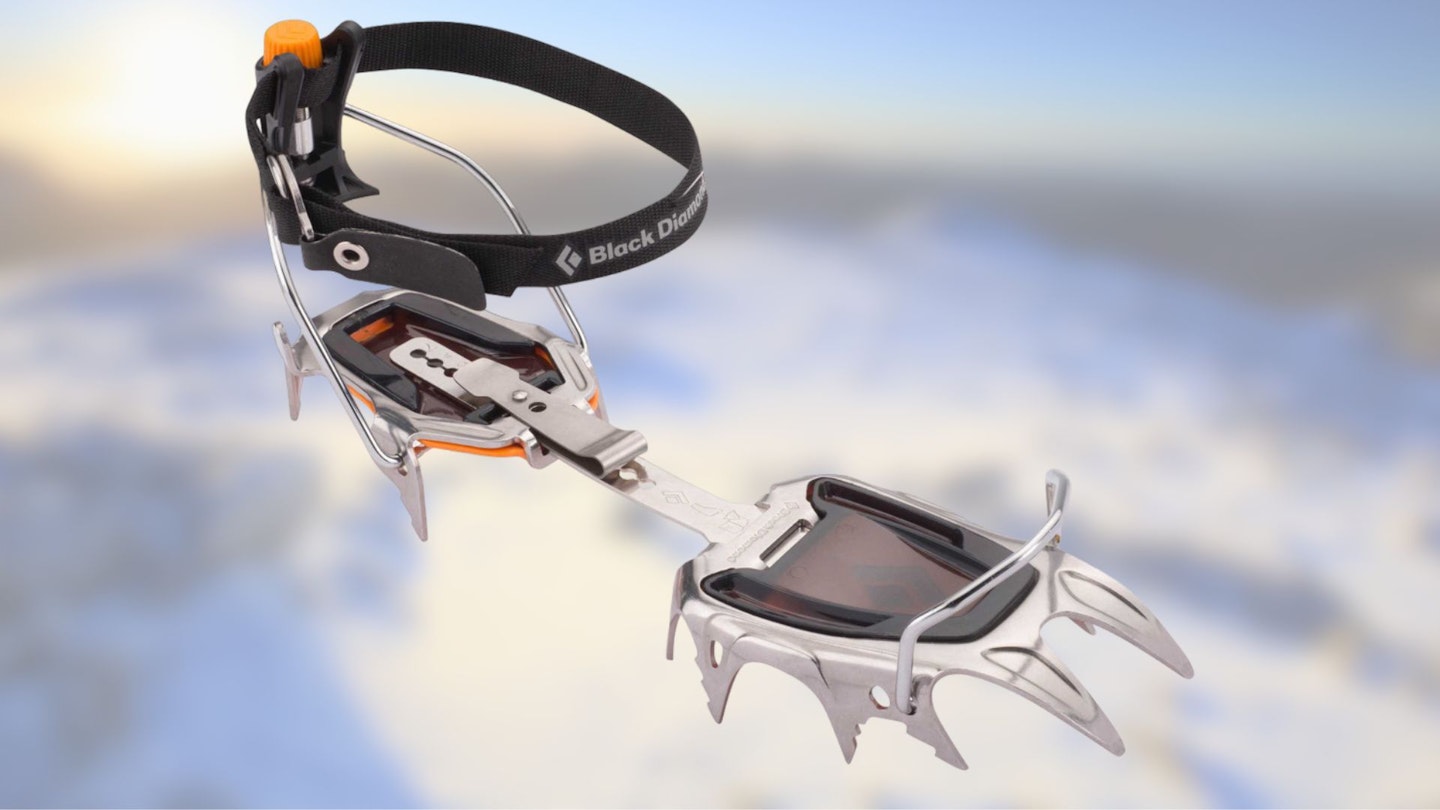
www.tiso.com
With their strong yet light stainless steel construction and no fewer than 14 spikes – including four forward-facing – it’s clear these have been designed for the toughest mountain terrain where maintaining grip on even the steepest gradients is essential.
While they’re available with a toe basket/heel-clip attachment (the Clip version), this Pro model with rear heel-clips and front toe-clips that attach firmly to mountaineering boots with the matching front and rear crampon welts provides the ultimate mountaineering performance.
Pros
- Awesome grip on steep, frozen terrain
- Durable construction
- Two binding systems
Cons
- A bit awkward to use on flatter terrain
- Overkill for most
| Best for | Technical winter walking and mountaineering |
| Weight (pair) | 890g (Pro), 910g (Clip) |
| Sizes | EU 36 - 46 |
| Number of spikes | 14 |
| C rating | C2 |
Best for versatility

www.ellis-brigham.com
Grivel’s G12s are classic ‘go almost anywhere, do almost anything’ crampons. With 12 points they offer maximum traction, with the front two points sticking aggressively forwards for tackling steeper ground in ascent.
At over a kilogram per pair they’re not especially light, but their solid build means they can be relied on to tackle the toughest terrain and last winter after winter, just requiring occasional filing to re-sharpen their spikes.
They’re also available as full strap (New-Classic EVO) or step-in (Cramp-O-Matic EVO) models.
Pros
- Popular, proven design
- Grivel alloy steel spikes stay sharp for longer
- Three binding systems
Cons
- Black Diamond Sabretooth have more aggressive forward spikes
| Best for | Technical winter walking and mountaineering |
| Weight (pair) | 1006g (New-Matic EVO), 964g (New-Classic EVO), 1012g (Cramp-O-Matic EVO) |
| Sizes | EU 36 - 47 |
| Number of spikes | 12 |
| C rating | C2 |
Best entry level mountaineering crampons

www.ellis-brigham.com
This is another 10-point crampon that at first glance could be aimed squarely at walkers. But the Irvis from Petzl offers some features that make it suitable for easier mountaineering routes too.
For starters, although a fully strap on version is available (the Flexlock model), this Leverlock attachment fixes firmly to dedicated winter boots with a rear crampon welt. It can even be configured to work as a step-in crampon with boots that have a front toe-welt too.
Add in their remarkable light weight – just 766g per pair – and these look impressive.
Pros
- Reasonably good value
- Well suited to most winter walkers
- Two binding systems
- Lighter than Grivel G10
Cons
- Don't feel quite as robust as Grivel G10
| Best for | Winter walking in the mountains |
| Weight (pair) | 766g (Leverlock Universal), 790g (Flexlock) |
| Sizes | EU 36 - 45 |
| Number of spikes | 10 |
| C rating | C2 |
Best microspikes for trail running shoes
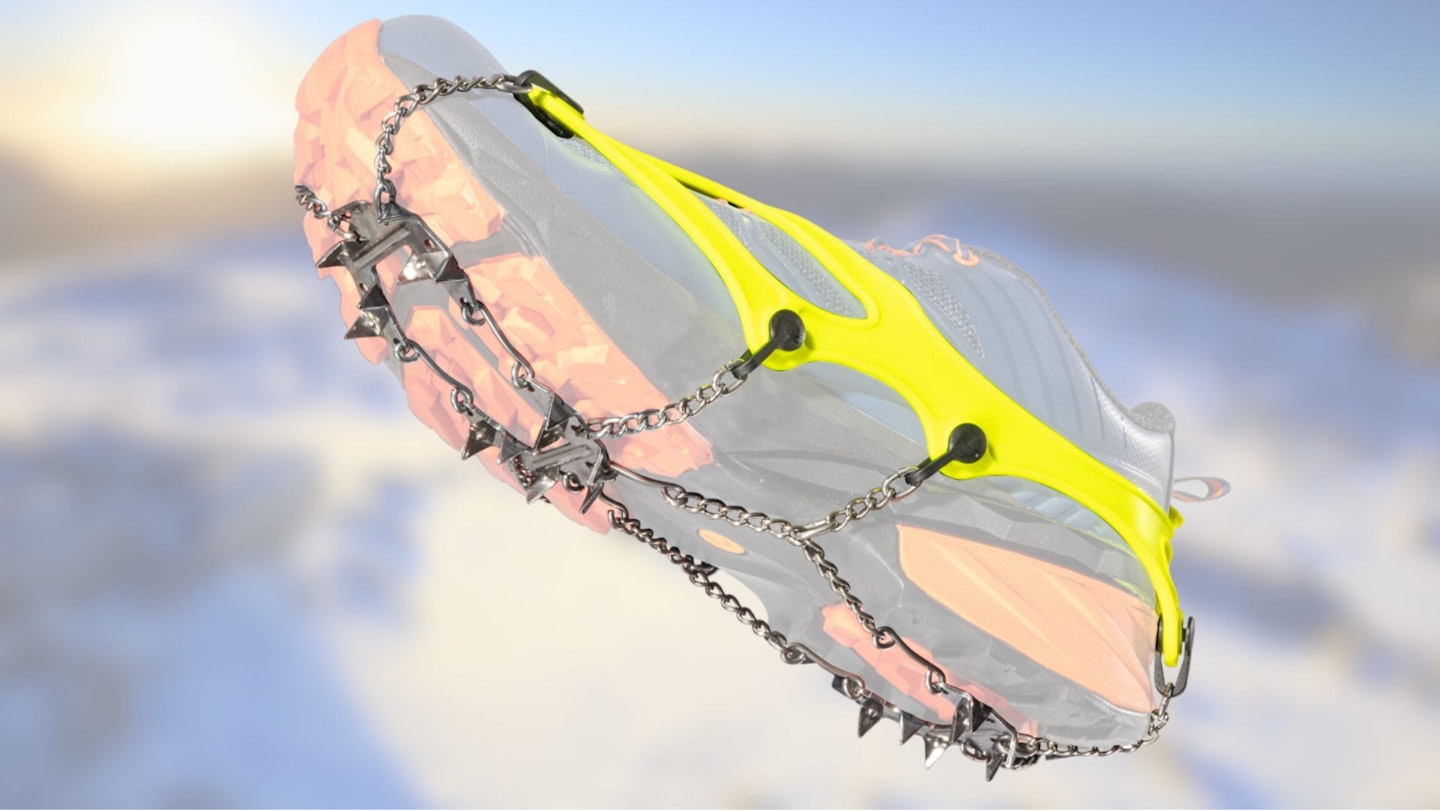
www.alpinetrek.co.uk
For winter trail runners or hikers who don’t really get involved with winter mountaineering, but who like to tread the lower-level paths around the hills to enjoy their winter spectacle, these micro crampons are ideal.
Available in five sizes (and two colours – Day-Glo yellow and pink), these can be pulled on over almost any pair of trekking shoes, and all but the largest and chunkiest boots.
For steeper or more technical ground a proper pair of stiff, fixed crampons is required, but for a just-in-case grip boost for icy paths or snow-covered lanes, these are perfect.
Pros
- Very lightweight
- Very easy to fit
- Good range of sizes
Cons
- Don't fit chunky hiking boots
| Best for | On-path hillwalking and running |
| Weight (pair) | 260g |
| Sizes | EU 36 - 49 |
| Number of spikes | 21 |
| C rating | N/A |
What to look for in a pair of crampons
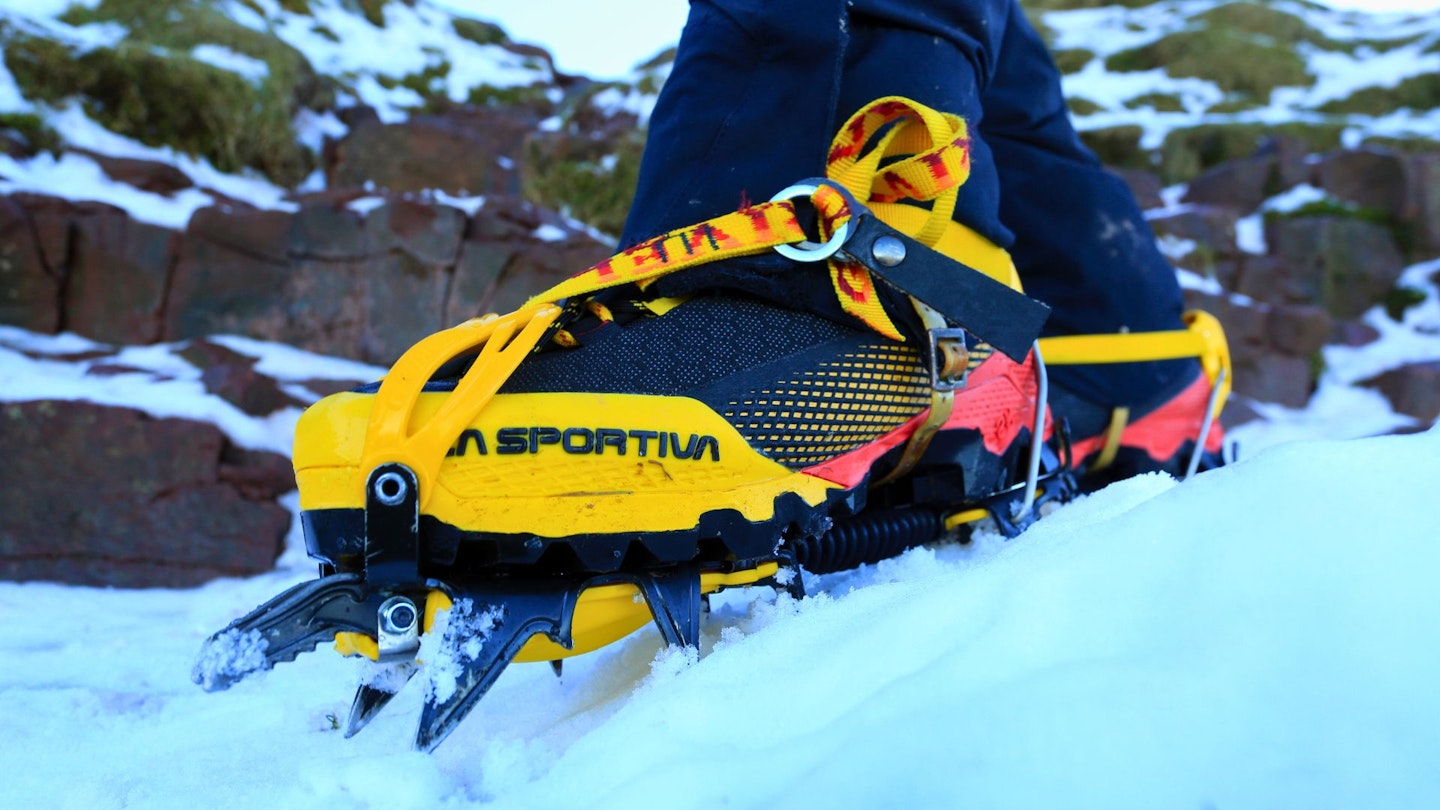
What do crampon ratings mean?
C1 are the most flexible, intended for winter hillwalking and use where the ground isn't too steep. They are compatible with B1 and B2 boots.
C2 are suitable for use with mountain B2 boots. They bear longer, more aggressive spikes that allow the user to tackle winter scrambles and steeper terrain. Yet, they're easy enough to walk in when needed.
C3 are the stiffest and most technical and used with mountaineering (B3) boots. These are identifiable by their very aggressive front spikes, which offer plentiful and precise grip when ice climbing and tackling highly technical routes.
When should you use crampons?
When there’s a deeper covering of snow and ice, or on steeper ground, crampons with good-sized spikes are a minimum requirement.
On easy gradient paths with only a thin film of ice, pull-on microspikes (sometimes called ice grippers) will offer improved traction while being less unwieldy and easier to walk in than crampons. Check out our guide on how to use crampons for more.
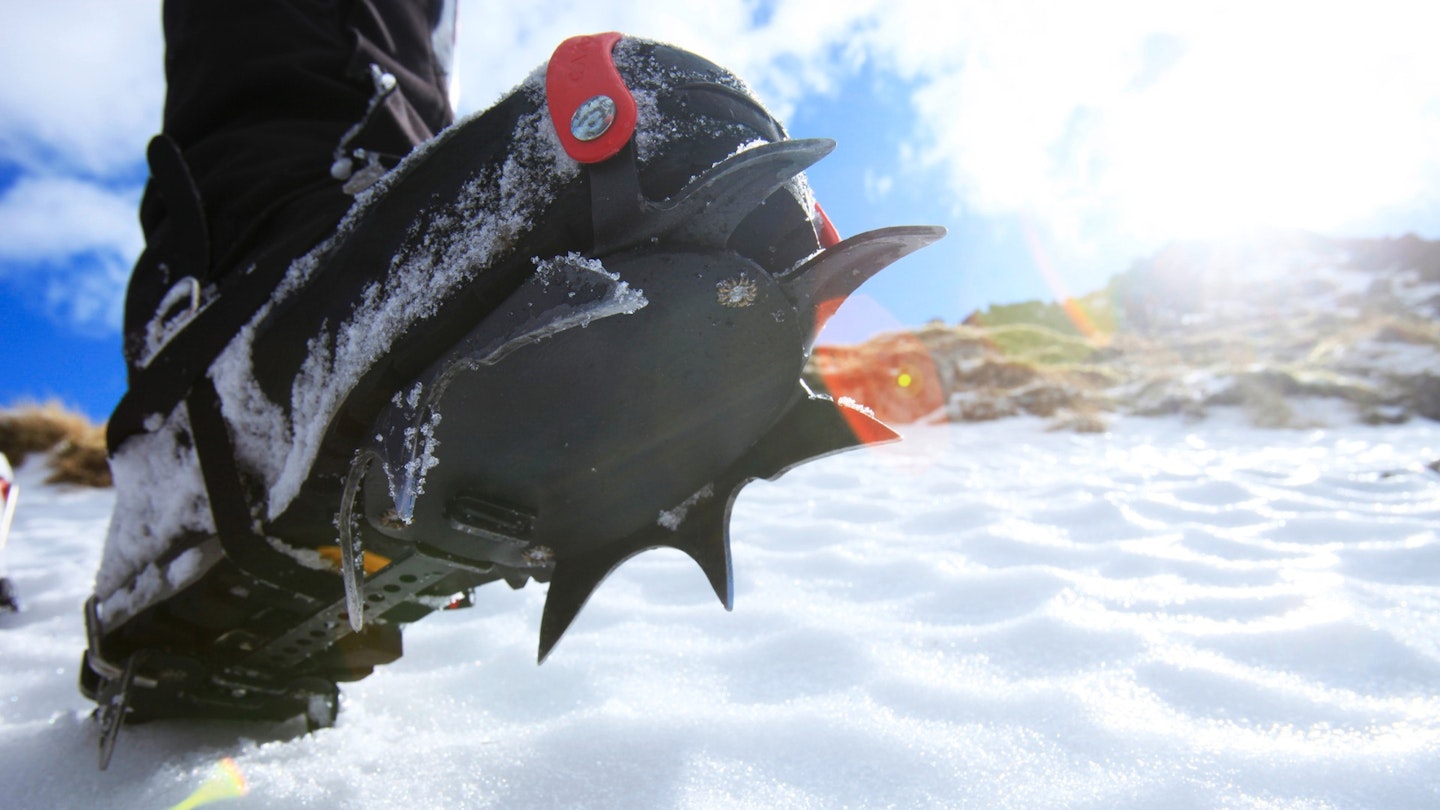
What number of spikes and points is best?
Walking crampons usually have 10 spikes, with most of those pointing down. Microspikes may have more, but as they apt name suggest, these are much smaller than those used on crampons.
Crampons for steeper terrain will offer 12 to 14 spikes with the front points being more horizontal.
What are anti-balling plates?
Anti-balling plates (or antibots) fit the underside of the crampon to prevent a build-up of snow. This is important because build-up can raise the spikes above the ice and reduce their grip.
How do crampons attach to boots?
Microspikes and ice grippers usually pull over footwear on a rubber frame, or use minimal strapping. The most basic crampon attachment also uses straps.
However, more technical models have a heel-clip to fit boots with a rear crampon welt. Specialised step-in crampons pair a heel-clip with a wire toe-bail to fit boots with welts at the rear and toe for challenging mountaineering.
About the author

Ben Weeks has been with Trail for over 10 years and is our main point of contact for all gear reviews. As well as being a hugely talented writer and photographer, Ben is also a qualified Mountain Leader and Climbing Instructor. Along with walking, scrambling and wild camping, he loves gnarly Scottish winter routes so is a master at putting cold weather kit through its paces.

